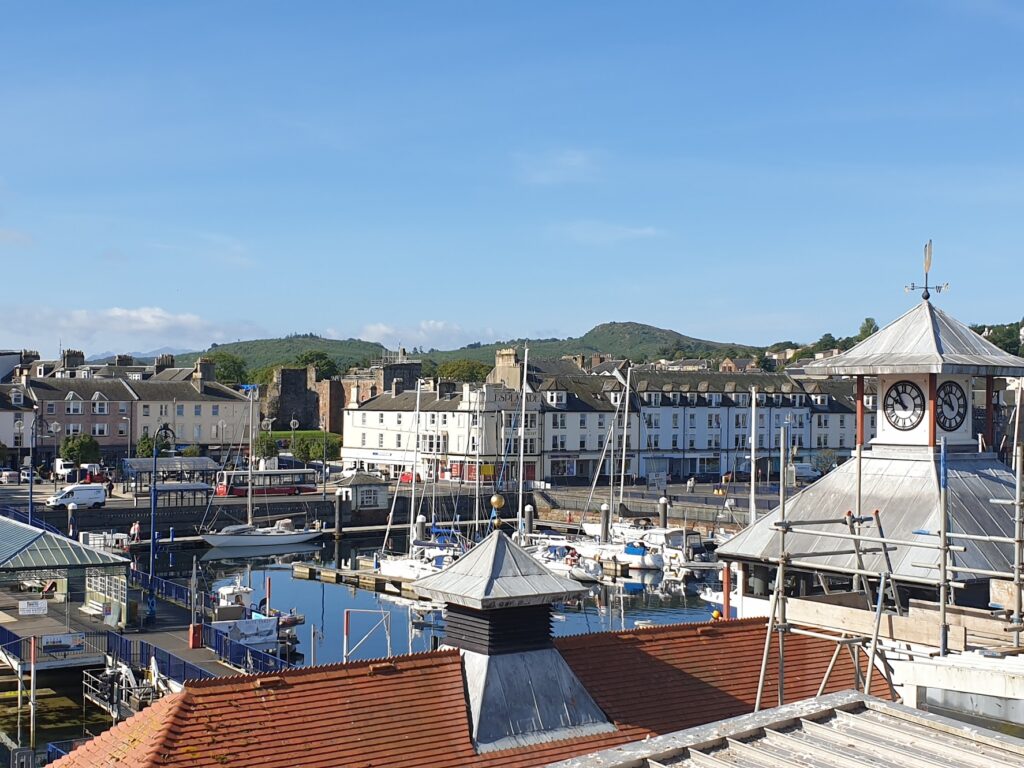
For many years before the pandemic, I had a job that took me all over the world. Once, many years ago, I spent a cold but enjoyable February week working in Gothenburg, Sweden, at the Nordic head office of Burger King, of all places. The Swedish lady on reception there had previously lived in the UK and I vividly remember her saying to me that, in her experience, the best parts of Britain are really wonderful and the worst parts are pretty bad. Her words stayed with me. I think she got it about right. And today, more than any other in this trip so far, showed me both ends of the spectrum.
We tumbled out of our 4th floor apartment in Rothesay, crossed the road and made the 10am ferry over the Clyde to Wemyss Bay on the mainland. The sun shone and the journey was pretty. The original Victorian railway station that connected trains from Glasgow with the Bute steamers is intact, complete with clock tower. But today we turned south along the coast road where 5 miles away stood the bonus island of Great Cumbrae, just off the coast a 15 minute ferry ride from the bustling seaside town of Largs. It was extra busy this morning because the paddle steamer “Waverley” was tied up at Largs pier, and a long queue was forming to board her. The Waverley is a lovely sight, with her funnels and her polished wooden seats. She is now the world’s only working sea going paddle steamer. She plies these waters every summer, as well as other parts of the British coast. I have been on her just once, from Cardiff to Ilfracombe in Devon in 2007. It was a lot of fun.
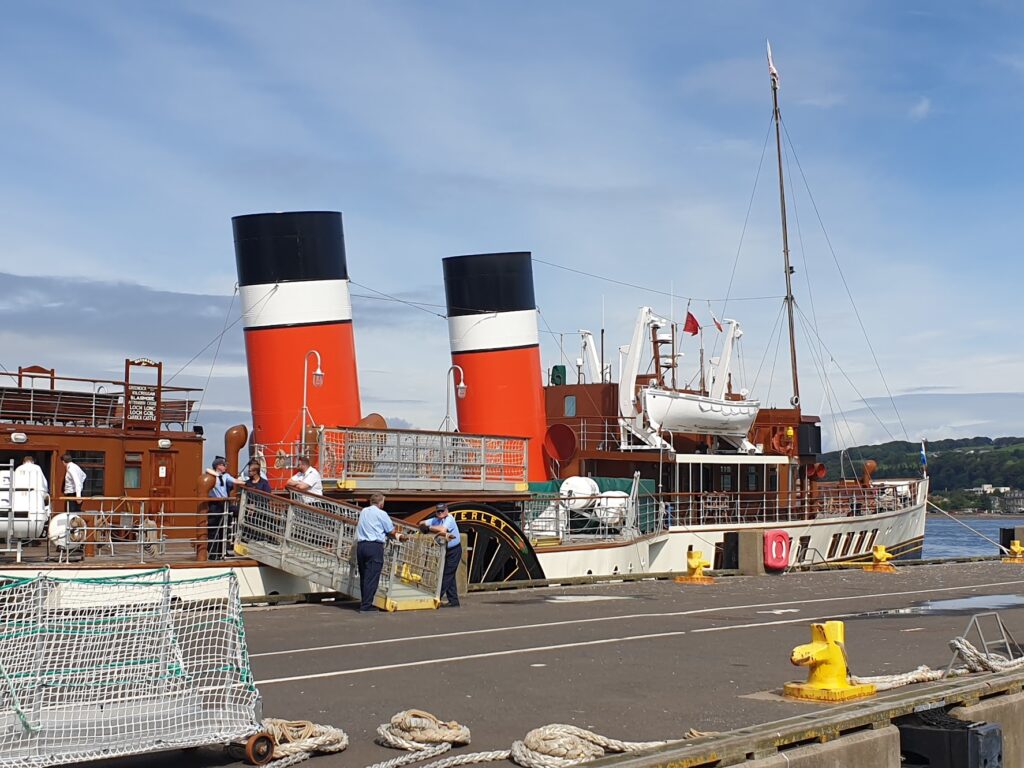
More ordinary ferries run almost continuously to Cumbrae and there were lots of people heading over to enjoy its 10 mile coastal loop of flat road, perfect for cycling. Groups of friends, and whole families of cyclists, were making the crossing. There were also many cars. But when we disembarked, the cars moved off, the crowd dispersed and we made the circuit on empty roads. The views to Bute and, beyond it, Arran, were splendid once again and Cumbrae offered a great vantage point. In Millport, its only town, we visited Britain’s smallest working cathedral, which has a turf maze cut into its lawn. And then we sailed back over to Largs, its waterfront punctuated by its two tall red church spires, to join the queues at the ”world famous” Nardini’s art deco ice cream parlour. Worth the wait? I don’t know, because we quickly decided to leave the long queue and get a very nice ice cream up the street.
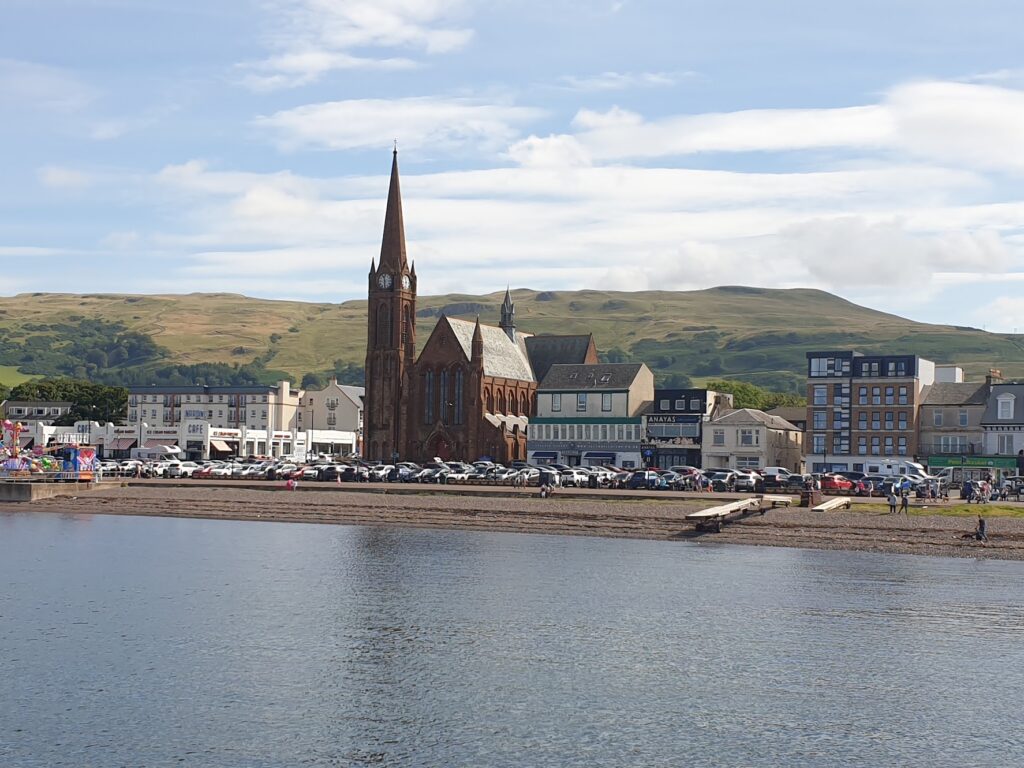
We knew that it would be different from here onwards. The first few miles towards Glasgow were unavoidably on main roads, which were OK but no fun. Then we picked up a paved railway path cycle track that ran about 15 miles into Paisley, a substantial town that now lies very much in Glasgow’s shadow. The journey there, a Sustrans cycle route, was a pleasant green corridor that made for great cycling. It saved us from passing through a number of towns that we saw just enough of to know we were better where we were.
But by the time we reached Paisley, we were hungry and thirsty, so we diverted into the town centre. We found a nice cafe in the broad, pedestrianised main shopping street. It formed a handsome axis between the excellent Town Hall, with its clock tower, at the bottom of a hill, and a beautiful church at the top with a fine tower topped by a stone crown. It felt like a place with a rich history, but sadly not much of a present. Its future is unknown; there were huge regeneration projects in evidence, which gave some hope; but you don’t fix a dying place like Paisley that quickly. It will surely be a struggle for it not to slip even further backwards. Much of the main street now consists of empty shops. Glasgow is less than 10 miles away and there are regular trains. It won’t be easy.
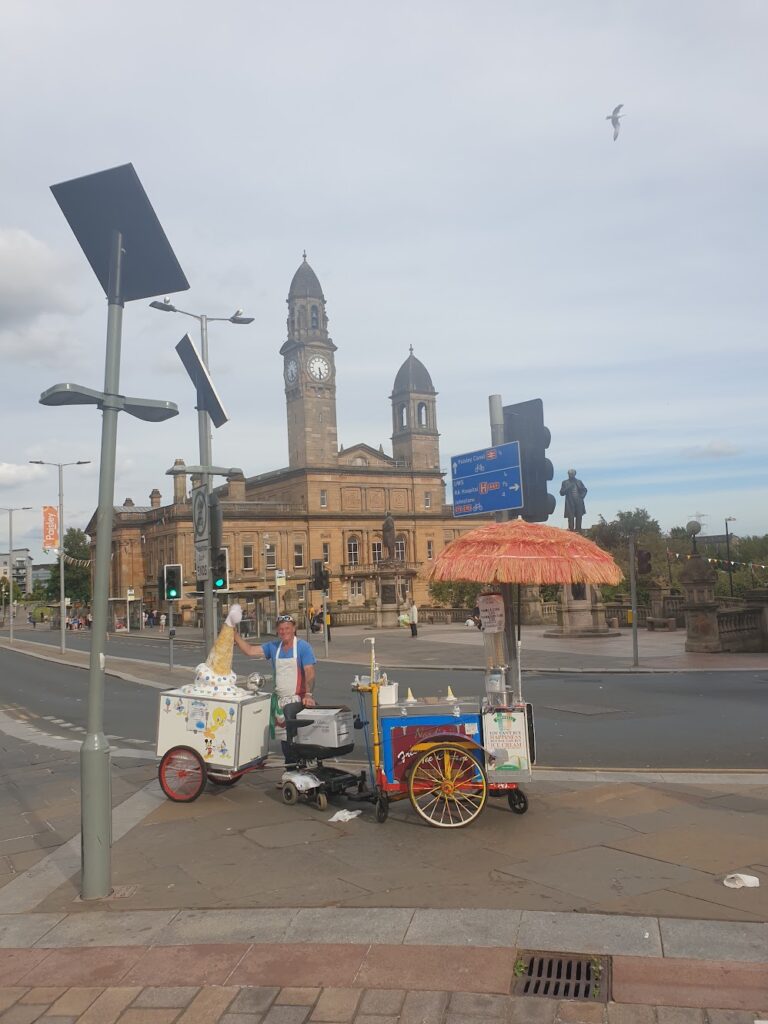
We left unsure of the best way to the centre of Glasgow by bike. But we found it anyway, along cycle paths from Glasgow Airport, just to the north, until we hit and followed the south side of the River Clyde. There was a mixture of derelict industrial sites and brand new development in roughly equal amounts, with a little nature to soften it all. And then, through some old iron gates, we arrived at the Renfrew Ferry, where a tiny boat was waiting at the bottom of a huge stone slipway. You couldn’t have guessed this would still exist as a crossing point over the large river in this post-industrial landscape. It was operated by a young, cheerful man who told us he carries 300 passengers a day, including 70 regular commuters. It felt like a relic; but it joined together cycle paths on each bank, and every other crossing made by the ferry now carries at least one bike. On the north bank, we followed a cycle route that led us straight into central Glasgow, our tiny hotel room, and a night out at the excellent Pot Still on Hope Street, whose whisky bar must be pretty much second to none. Which is partly why I am now a day in arrears writing this blog. I will catch up again this week, honest. But not tonight.
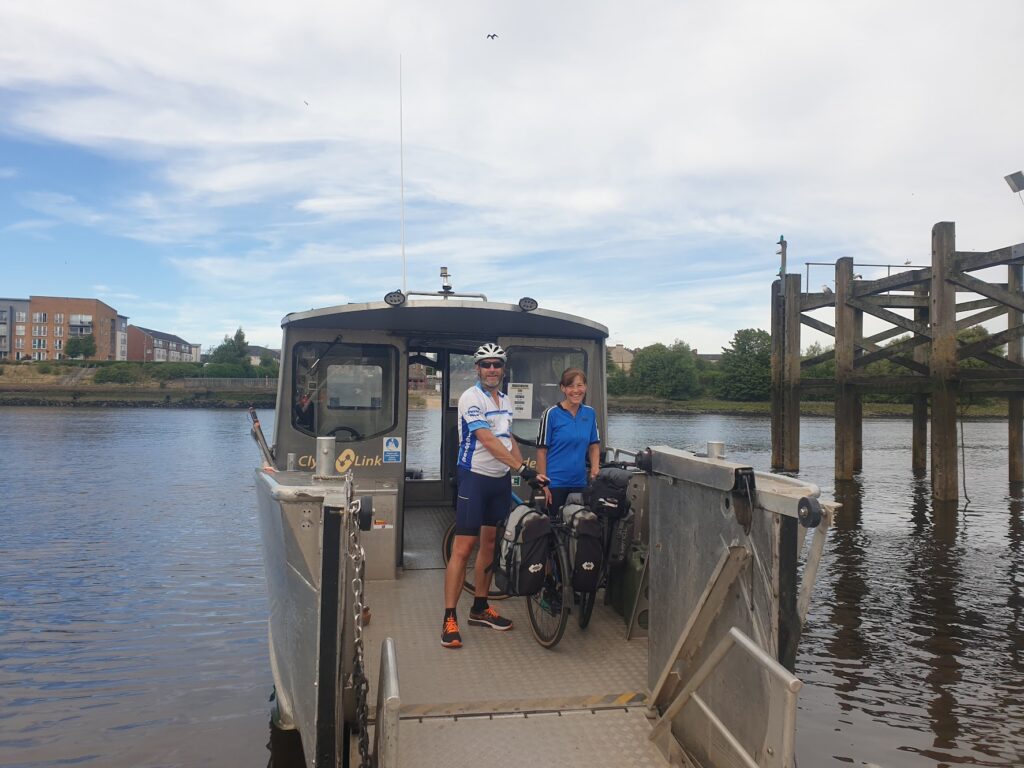
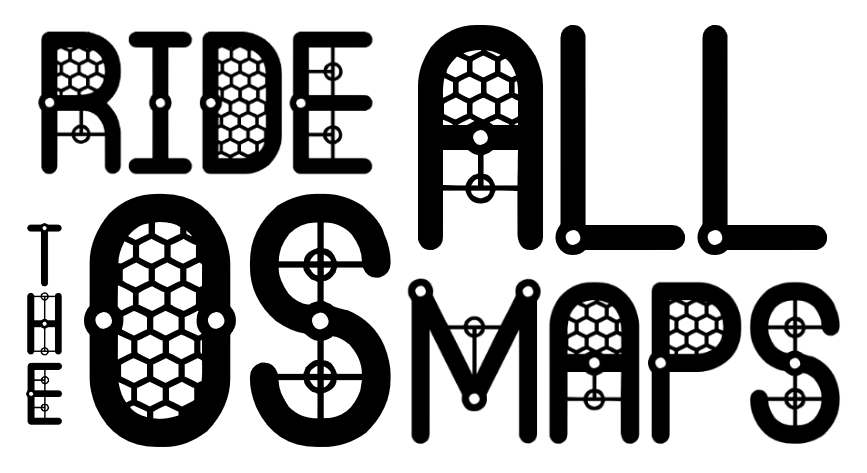
One reply on “Maps 63 & 64 – Bute to Glasgow”
Nardinis is recommended, if my memories from a long while ago are correct.